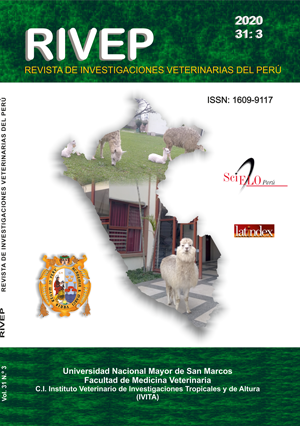Diagnostic techniques for bacterial diseases in shrimp farming
Uses, scopes and limitations
DOI:
https://doi.org/10.15381/rivep.v31i3.18165Keywords:
shrimp, aquaculture production, bacterial pathologies, diagnostic techniquesAbstract
Farmed shrimp are constantly threatened by infectious diseases. The increasing pressure on production demands high performance and efficiency that can only be achieved by eliminating or reducing the impact of pathogens. The timely detection of diseases is of great importance, so it is required to have a clear command of the advantages and disadvantages of different diagnostic techniques, in order to implement a rapid response to outbreaks that may occur. Obtaining a diagnosis will depend on various factors, including the early detection of clinical signs and the correct interpretation of the results. In this way, the selection of techniques that allow a preliminary approach to a health emergency and the confirmatory tests that will lead to the design of actions to be chosen. The aim of this paper was to present the advantages and disadvantages of the diagnostic techniques currently available for the identification of bacterial agents that affect shrimp, providing information for objective decision-making that allows solving sanitary problems in aquaculture production.
Downloads
Downloads
Published
Issue
Section
License
Copyright (c) 2020 Alexander Varela, Luis F. Choc-Martínez

This work is licensed under a Creative Commons Attribution-NonCommercial-ShareAlike 4.0 International License.
AUTHORS RETAIN THEIR RIGHTS:
a. Authors retain their trade mark rights and patent, and also on any process or procedure described in the article.
b. Authors retain their right to share, copy, distribute, perform and publicly communicate their article (eg, to place their article in an institutional repository or publish it in a book), with an acknowledgment of its initial publication in the Revista de Investigaciones Veterinarias del Perú (RIVEP).
c. Authors retain theirs right to make a subsequent publication of their work, to use the article or any part thereof (eg a compilation of his papers, lecture notes, thesis, or a book), always indicating the source of publication (the originator of the work, journal, volume, number and date).



